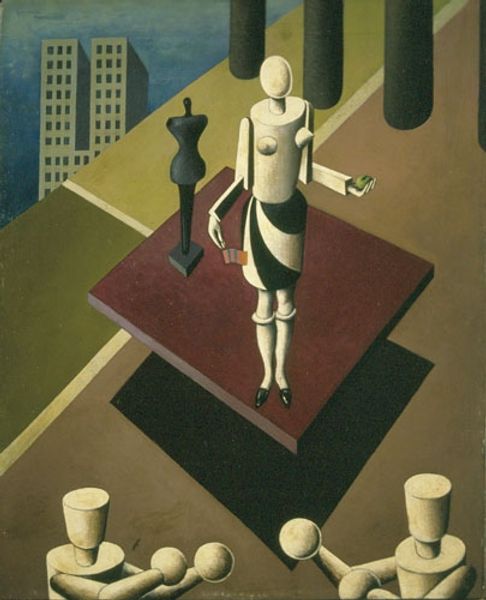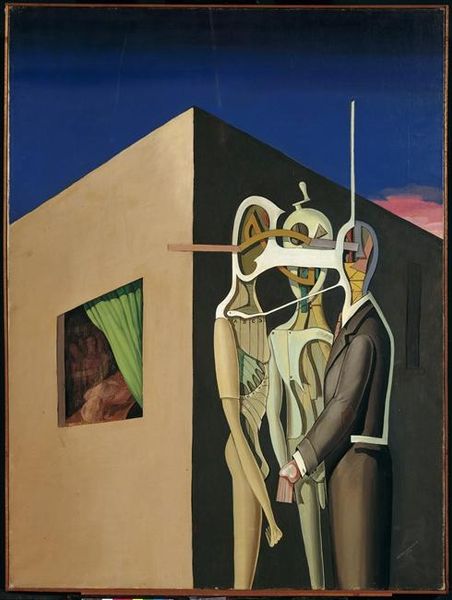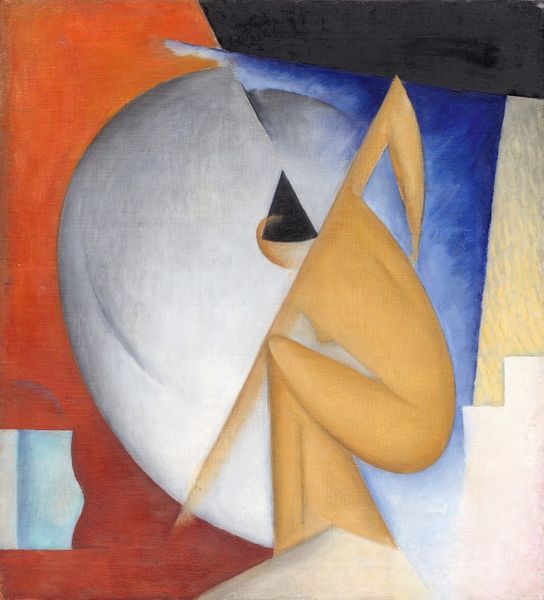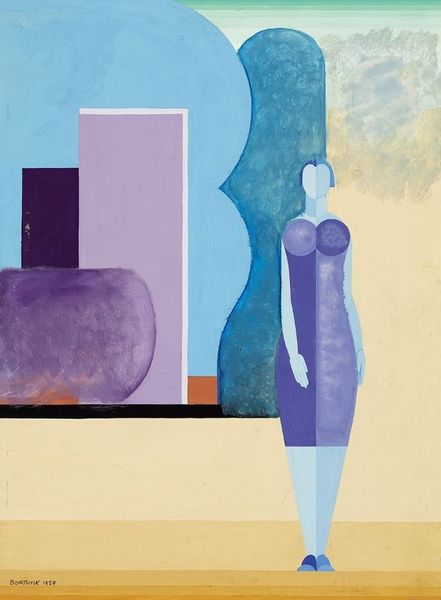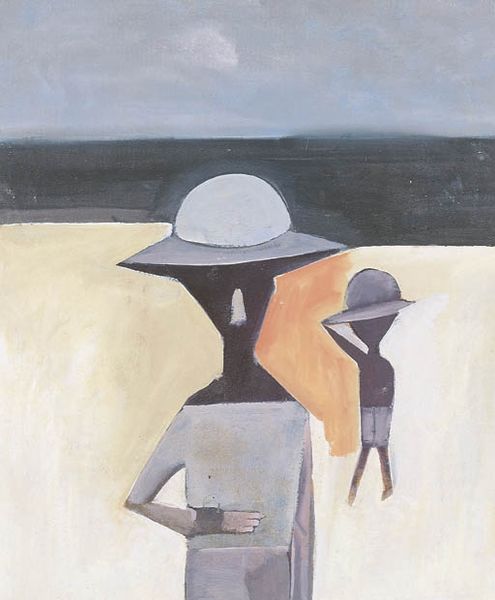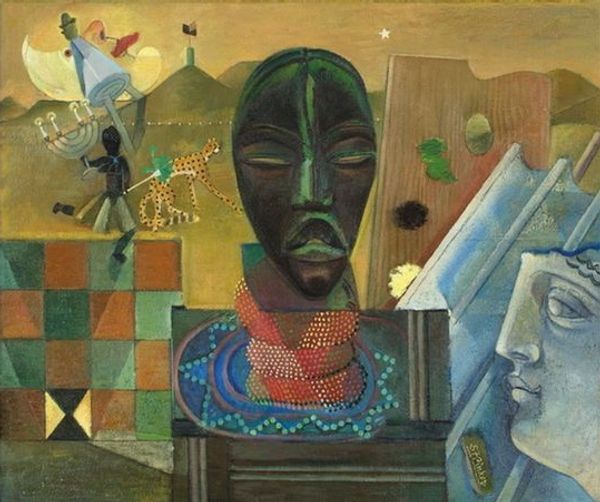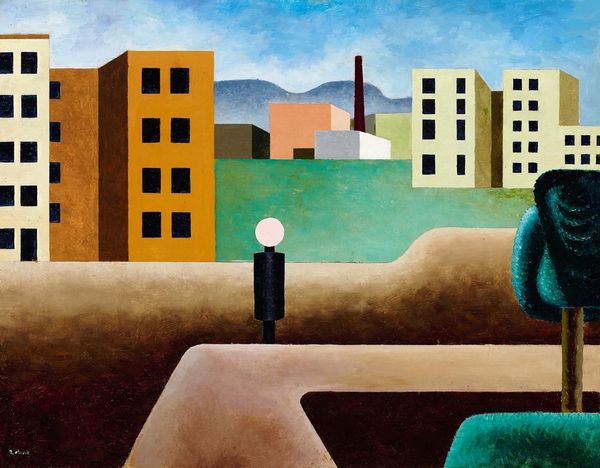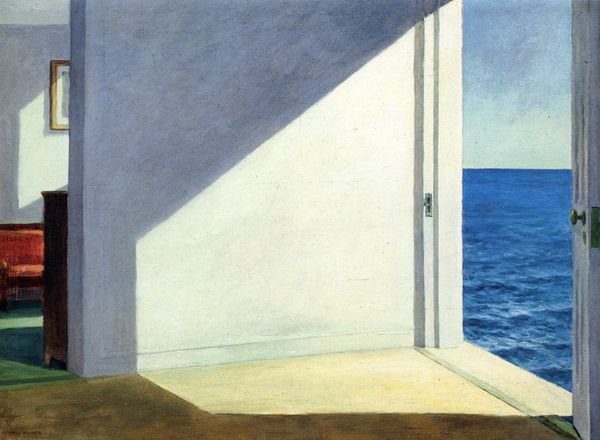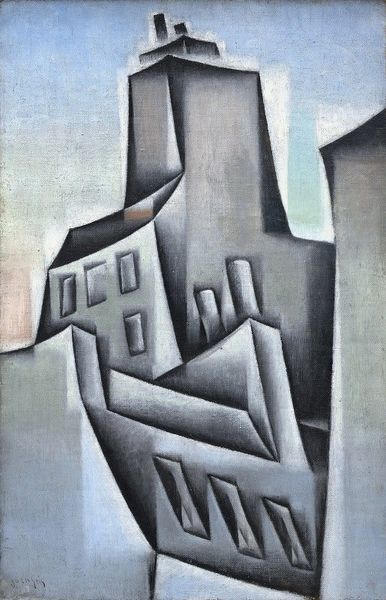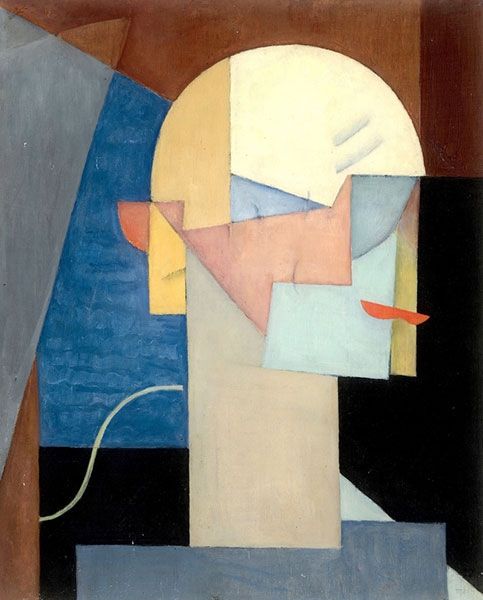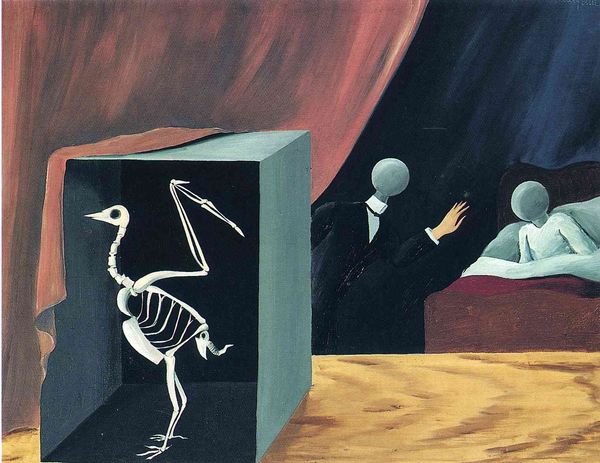
painting, oil-paint
#
painting
#
oil-paint
#
landscape
#
constructivism
#
figuration
#
oil painting
#
geometric
#
cityscape
#
modernism
Copyright: Sandor Bortnyik,Fair Use
Curator: Standing before us, we have Sándor Bortnyik's "Vörös Farosz". Editor: It’s strikingly eerie. This blend of stark geometric forms with the muted color palette creates a palpable sense of isolation and an odd perspective. Curator: Absolutely. Bortnyik, a key figure in Hungarian modernism, particularly Constructivism, crafts a cityscape both familiar and disturbingly alien. You have industrial elements, the ocean, and a strange monument... or a giant figure. Editor: That's what unsettled me from the start! The massive, almost deified statue. There is also a lonely figure near some building in the foreground, in almost perfect symmetrical order to the tower far away. The size of that figure relative to her raises a lot of interesting questions. Does this connect to some societal critique regarding the idolization of the State? Curator: A sharp reading. The symbolic language resonates deeply with early 20th-century anxieties around industrialization and political power. Bortnyik worked extensively with geometric forms which he felt provided a universal visual language to express societal ideas, informed in his case, with Socialist ideals. The statue might signify both authority and an aspirational ideal— perhaps a "new man". Editor: This aspiration feels like an imposition here though. The red lighthouse seems a desperate beacon against the cold blue, as the pink building creates an even stronger divide. Curator: That color tension amplifies the disquiet. The use of color creates visual cues of tension between hope and reality. Editor: The title translates to "Red Lighthouse," right? It anchors the whole scene despite its size. You begin to question the safety it implies: Are the dangers of industry a larger concern than those that may exist at sea? Curator: Precisely, and consider the lighthouse's traditional symbolism: guidance, safety, hope. Here, that red might be refigured into something of a warning signal. It represents the anxieties related to technological advancement during that era. The promise of Communism transformed. Editor: So the formal structure actually serves to undermine the traditional positive interpretations associated with these kinds of symbols and colors? Curator: The artist invites you to consider multiple interpretations of societal tension as something to look forward to, or to perhaps fear. The painting itself becomes the beacon. Editor: I leave now with much to consider: a complex dance of power, industry, and maybe a dash of melancholic unease. Curator: Indeed. And with a renewed perspective on how seemingly simple forms can carry such layered cultural weight.
Comments
No comments
Be the first to comment and join the conversation on the ultimate creative platform.
